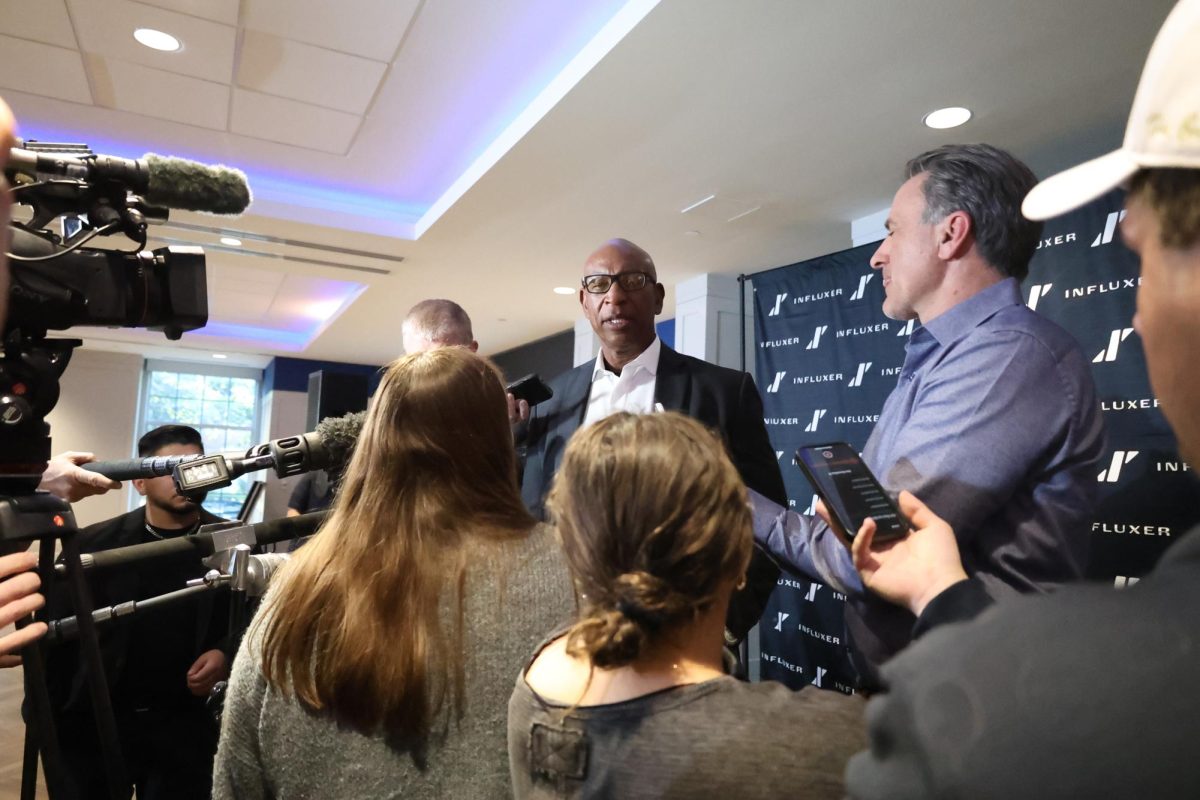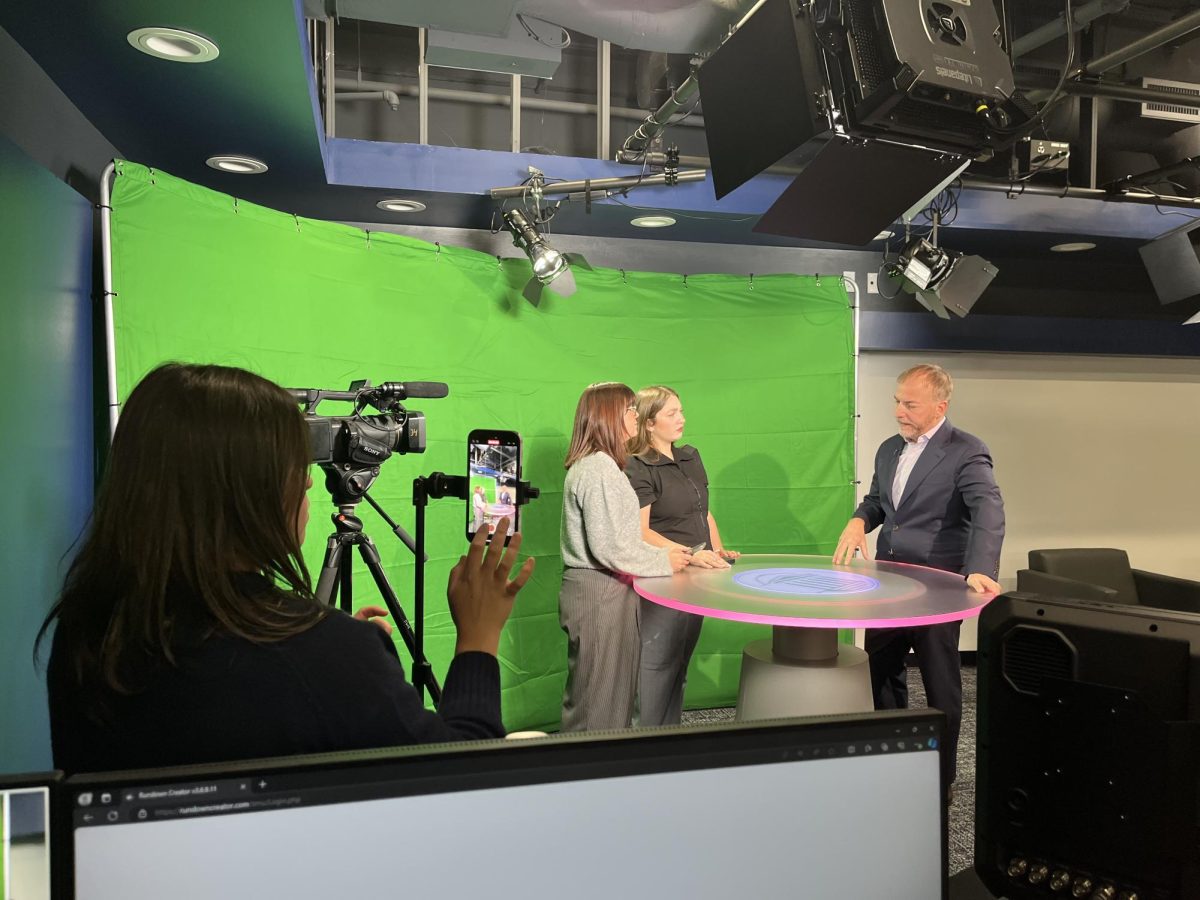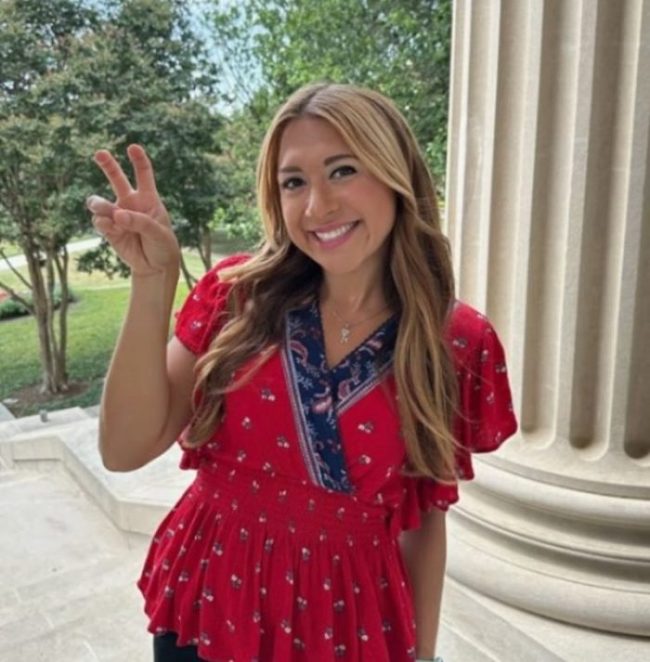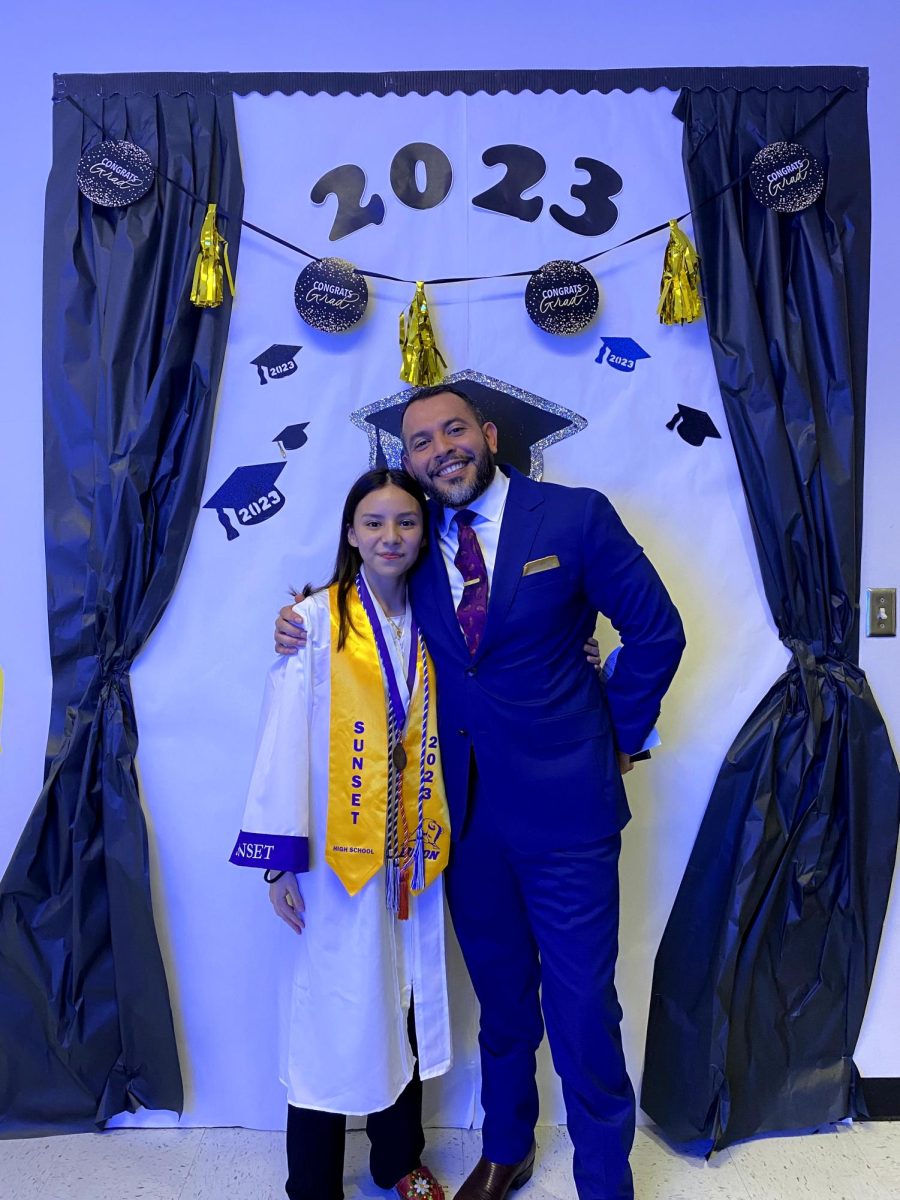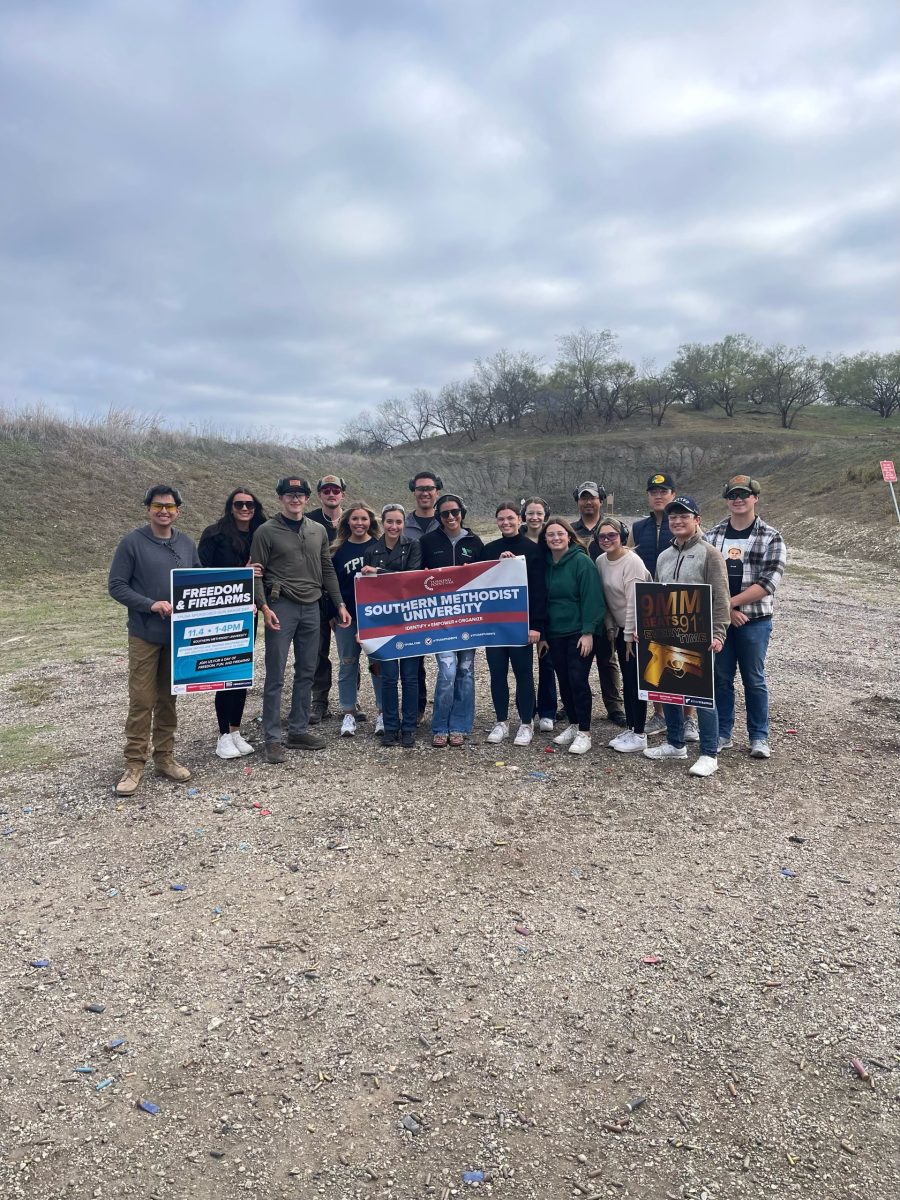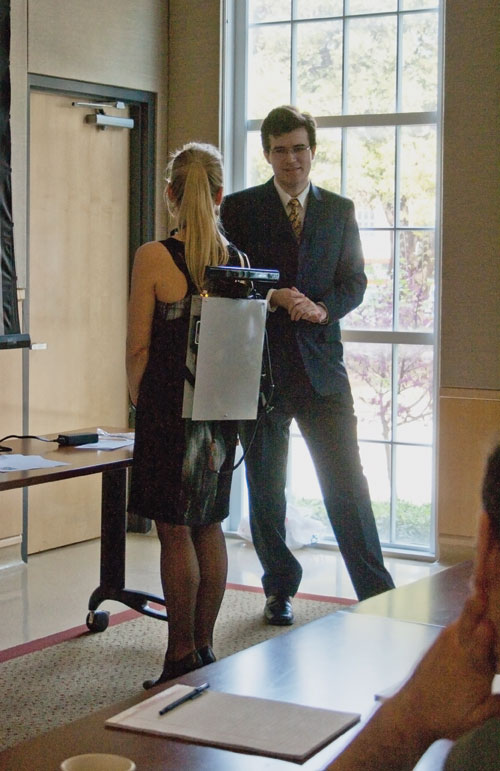
SMU Junior Vladimir Jovanovic demonstrates his winning Metis prototype in the Lyle Innovation Competition on Friday. The prototype will allow its users to “see” what’s behind them by sending vibrations through the neck. (REBECCA HANNA/The Daily Campus)
Three teams revealed their crea-tivity by proposing their ideas to a panel of judges Friday at the Lyle School of Engineering’s second annual Innovation Competition.
Whether it is tackling a worldwide problem or a campus issue, the Innovation Competition is open to all SMU students who have ideas they want to expose.
“It’s wonderful to see students from across campus get excited about it [the competition],” Geoffrey Orsak, dean of the Lyle School of Engineering, said. “A good idea can come from anyplace.”
Vladimir Jovanovic, a junior computer science and psychology major, won the $5,000 first prize award for his device-Metis.
After doing research on sensory perception for one of his classes, Jovanovic decided he wanted to create a device that would enhance brain function by altering people’s sensations about the world.
After placing the device on a person’s back and neck, Metis allows the person to feel what is around him by sending vibrations to his neck.
Jovanovic believes his device is applicable for many different people, such as the military, handicap, pedestrians and motorcyclists.
He also believes he won because of his final presentation in front of the judges.
“Talking about my device is one thing, but actually getting to feel the sensations of someone walking behind you is what can change your mind about my device,” he said. “It [the final presentation] allowed me to demonstrate to the judges and the public how my idea really works.”
Students who participate in this competition work on their projects outside of class and do not receive class credit.
“We really want to see their [the students’] own inspirations come alive. We want to see their passion,” Orsak said. “These kids are as talented as any kids in the country.”
Greg Carr and Lisa Hart-Willis approached Volkan Otugen, the mechanical engineering department chair, with the idea of the Inno-vation Competition.
“Innovation is an idea but there is a person behind it,” Carr said.
Otugen and Nathan Huntoon then worked on implementing details for the competition.
“Most people are never given the opportunity to turn those good ideas into reality,” Huntoon, the director of the Innovation Gymnasium, said. “The SMU Innovation Competition is an attempt to get those good ideas into the open.”
There are two phases of the competition.
Last year, three teams submitted written proposals in Phase I and then moved on to Phase II. This year, 12 teams submitted written proposals, but only three were selected to develop their prototypes in Phase II.
The biggest difference from last year’s competition to this year’s was time available for development.
Last year, students had only the spring semester to write their proposals and design their devices before presenting them to the judges. This year, students had both the fall and spring semesters to work on their ideas.
The teams presented to a panel of six judges, which included Tomima Edmark, who invented the Topsy Tail; Volkan Otugen; and Dr. Ira Greenberg, a professor in both the Lyle School of Engineering and the Meadows School of the Arts.
First runner up went to Kent Henry, Ross Hill and Jared Miller for their device that improved the reliability of handguns.
Second runner up went to Matthew Brannick, Keith Adler, Meredith Faber and James Moats for their creation,GeoDATA, which is a system to help people manage large sets of data.



